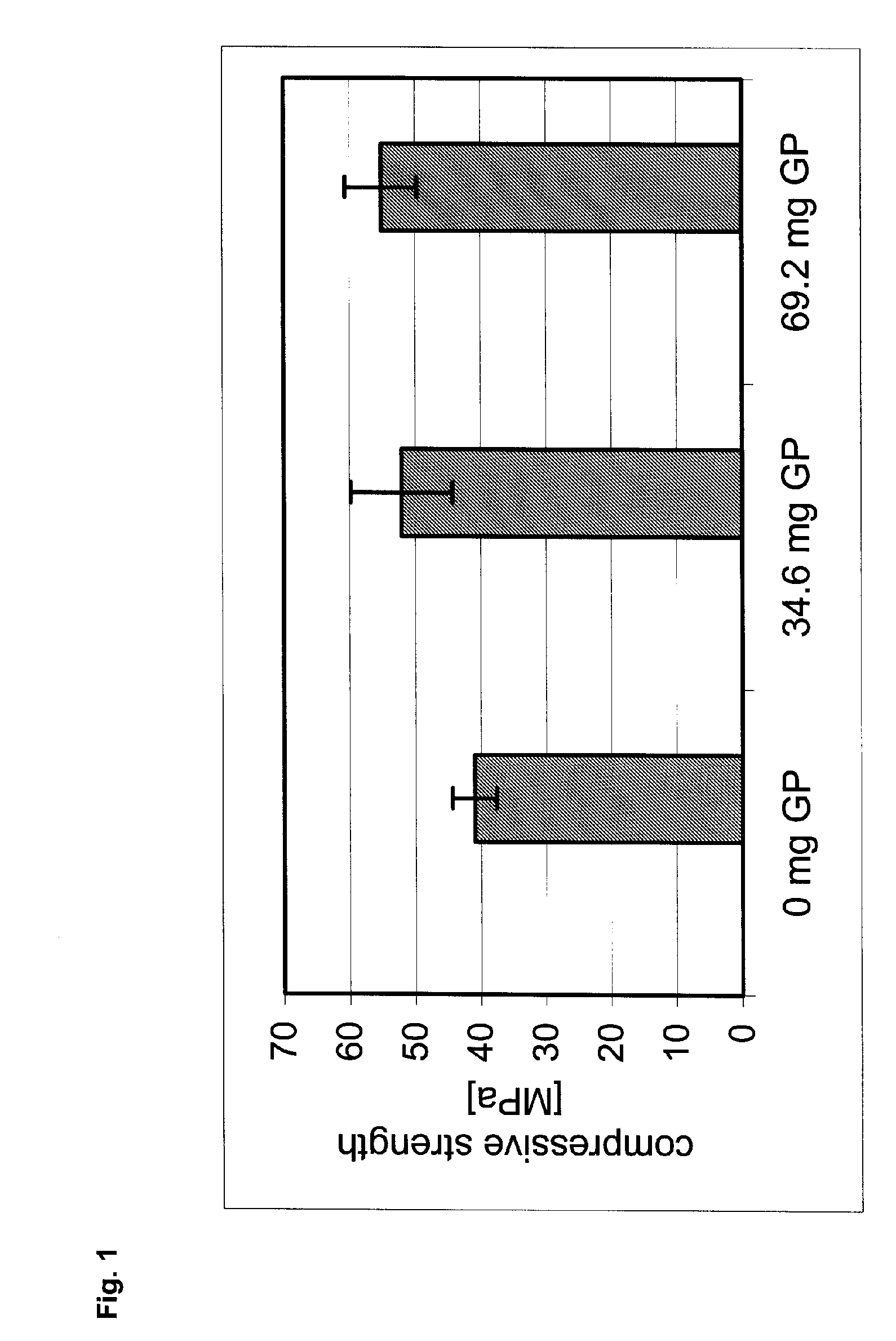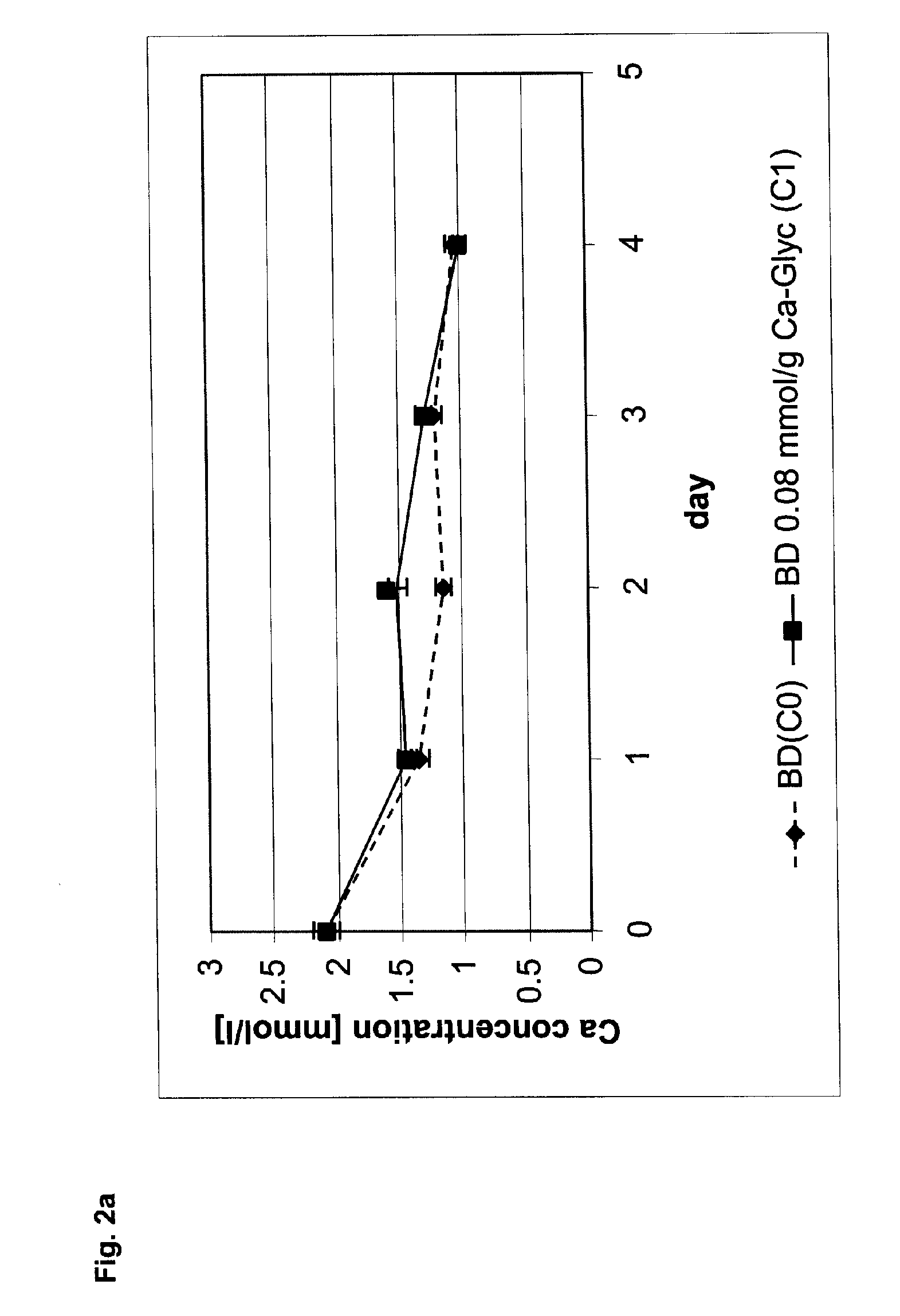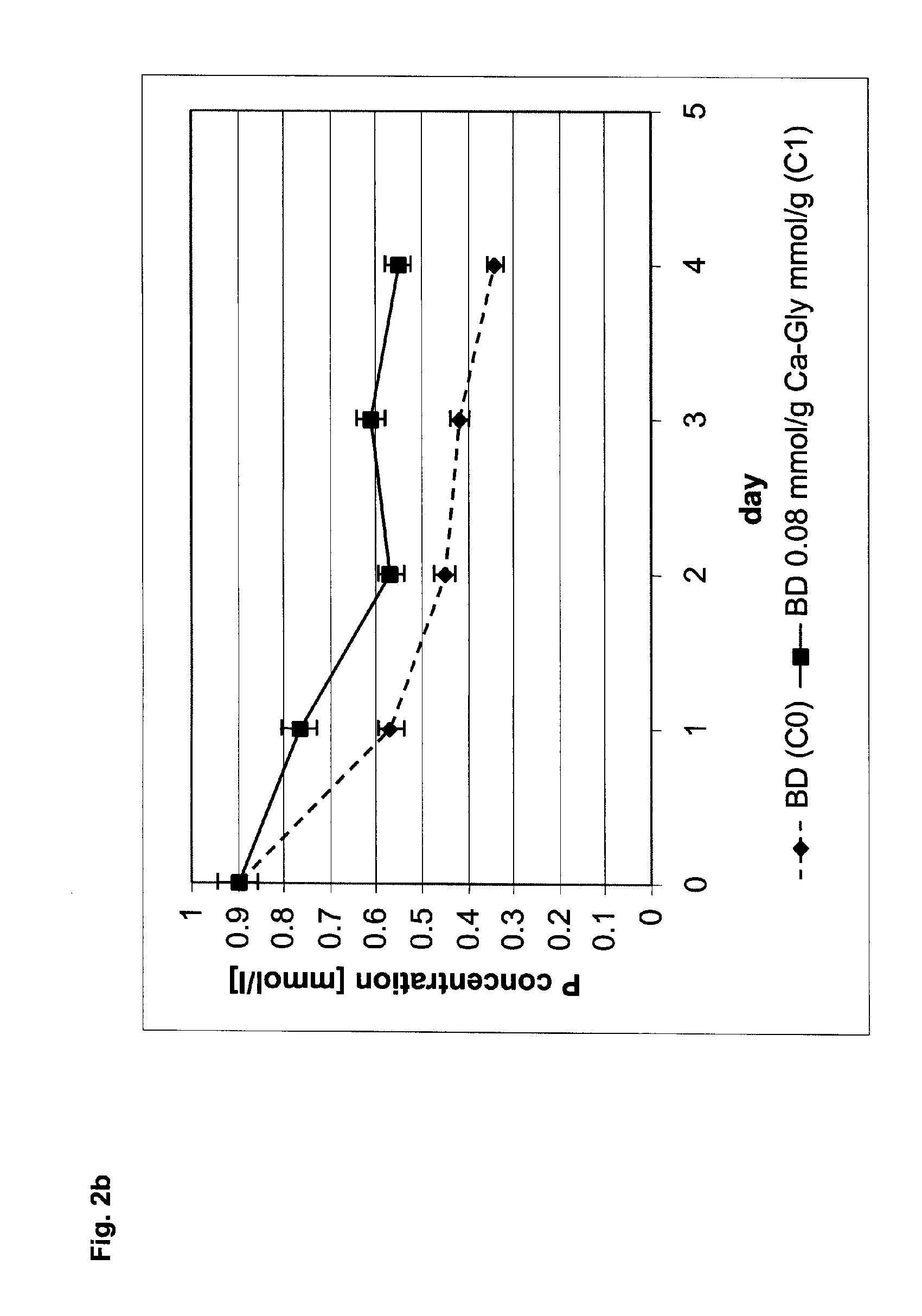Modified Calcium Phosphate Bone Cement
a technology of calcium phosphate, which is applied in the field of modified can solve the problems that the calcium phosphate bone cement (cpbc) cannot meet the requirements of sufficient high strength, and achieves improved cell and tissue compatibility, increased strength, and greater specific surface area
- Summary
- Abstract
- Description
- Claims
- Application Information
AI Technical Summary
Benefits of technology
Problems solved by technology
Method used
Image
Examples
example 1
[0040] As a base cement for producing a glycerophosphate-containing bone cement, Calcibon®, a calcium phosphate bone cement of the company BIOMET Merck Biomaterials GmbH, Germany, was used. To 1000 g of this base cement, 34.6 mg of β-glycerophosphate (sodium salt; molecular mass 216 g / mol—G1) and 69.2 mg of β-glycerophosphate (sodium salt; molecular mass 216 g / mol—G2) were added, respectively, and thoroughly mixed. As a comparative example, Calcibon® without any additives was prepared (G0).
[0041] The mixtures G0, G1, G2 were processed to a paste in accordance with an l / p ratio of 0.28, wherein a 4 percent aqueous disodium hydrogen phosphate solution was used. Subsequently, the pasty cement mixtures were shaped in accordance with their further use.
[0042] For determining the compressive strength, cylindrical bodies (diameter 10 mm, height 8 mm) were prepared. They were placed into approximately 5 ml SBF solution and are cured at 37 degrees C. for exactly 100 hours. By means of a mat...
example 2
[0047] As a base cement, Calcibon®, a calcium phosphate bone cement of the company BIOMET Merck Biomaterials GmbH, Germany, was used. To 1000 mg of this base cement, 16.8 mg calcium glycerophosphate C1 (molecular weight 210 g / mol) was added and thoroughly mixed into the base cement. As a comparative example, Calcibon® without any additives was used (C0).
[0048] The substances C0 and C1 were processed to a paste in accordance with an l / p ratio of 0.32, wherein a 4 percent aqueous disodium hydrogen phosphate solution was used. Subsequently, the pasty cement mixtures were shaped in accordance with their further use.
[0049] For determining the compressive strength, cylindrical bodies (diameter 10 mm, height 8 mm) were prepared. They were placed into approximately 5 ml SBF solution and cured at 37 degrees C. for exactly 100 hours. By means of a materials testing machine—Instron 5566—the critical pressure was determined (advancing speed 8 mm / s) that, relative to the surface of the specime...
example 3
[0054] As a base cement for producing a phosphoserine-containing bone cement, Calcibon®—a calcium phosphate bone cement of the company BIOMET Merck Biomaterials GmbH, Germany, was used. To 1000 mg of this base cement, 25 mg orthophospho-L-serine (molecular weight 185 g / mol) were added and mixed thoroughly (P1). As a comparative example, Calcibon® without any additives (P0) was used.
[0055] The mixtures (P0, P1) were processed to a paste in accordance with an l / p ratio of 0.32, wherein a 4 percent aqueous disodium hydrogen phosphate solution was used. Subsequently, the pasty cement mixtures were shaped depending on their application. The determination of the compressive strength was carried out in accordance with Example 1.
[0056] The results of the example P1 and the comparative example P0 for the compressive strength (D) are compiled in Table 3.
TABLE 3P0P1phosphoserine per g—25 mgbase cementD [MPa]37.96 ± 460 ± 7.27
[0057] A significant increase of the stability after addition of ...
PUM
| Property | Measurement | Unit |
|---|---|---|
| Percent by mass | aaaaa | aaaaa |
| Percent by mass | aaaaa | aaaaa |
| Percent by mass | aaaaa | aaaaa |
Abstract
Description
Claims
Application Information
 Login to View More
Login to View More - R&D
- Intellectual Property
- Life Sciences
- Materials
- Tech Scout
- Unparalleled Data Quality
- Higher Quality Content
- 60% Fewer Hallucinations
Browse by: Latest US Patents, China's latest patents, Technical Efficacy Thesaurus, Application Domain, Technology Topic, Popular Technical Reports.
© 2025 PatSnap. All rights reserved.Legal|Privacy policy|Modern Slavery Act Transparency Statement|Sitemap|About US| Contact US: help@patsnap.com



